| The Greek Islands | Parga | Parga Beaches | Parga Hotels | Parga Villas |
 |
 |
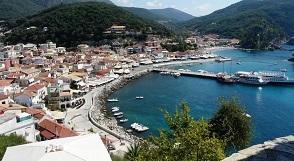 |
 |
 |
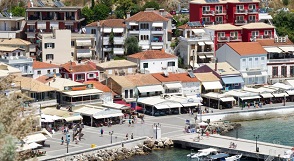 |
 |
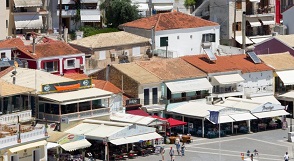 |
 |
 |
| THE TOWN OF PARGA IN EPIRUS / EPIROS IN GREECE |
 |
 |
 |
 |
 |
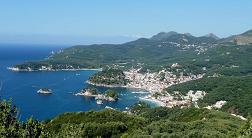 |
 |
 |
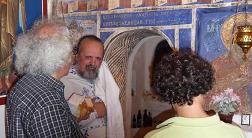 |
 |
|
Parga has its roots mainly in the Venetian time, and many of the houses and narrow streets and stairs in the village still remember from this period, but in ancient times the region was already inhabited. One suspects that it was the place of the old city Toryne. At the top of the town are the remains of a fortress dating back to the 11th century, which was built with the help of the Normans as a protection against pirates and against the Turks. In the 13th century it was fortified by the Venetians. In 1401 Parga, together with the Ionian Islands, came under Venetian rule. In 1542 the fortress of Parga was conquered by the Ottomans. The occupation lasted two years and the fortress and the houses on the premises were set on fire and destroyed by the Ottomans. In 1572, the fortress was rebuilt, expanded and strengthened by the Venetians. Inside its walls was place for 400 homes. Only in 1819 it was recaptured by the Turks. For all hotels, apartments, studios and villas in Parga - click here. |
 |
 |
 |
 |
 |
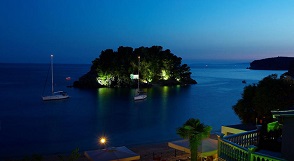 |
 |
 |
 |
 |
|
|
 |
 |
 |
 |
 |
 |
 |
 |
 |
 |
|
Although I've never been in Parga myself, I understand from friends that it is in particular rewarding to go and see the interior landscape. There are excursions by boat or by bus, or of course you can rent a car. You can visit Albania, or the Meteora, or Ionian islands like Paxos, Antipaxos and Corfu. Especially the excursion to the Meteora (the old monasteries built on rock pillars) seems to be very special. The first monastery was built in 1336 on a 623 meter high mountain and it was followed by 23 other monasteries. To get there you have to climb up ladders and the goods are transported up by ropes and nets. Nowadays six of them are still in use. |
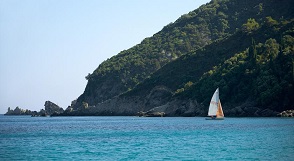 |
 |
 |
 |
 |
 |
 |
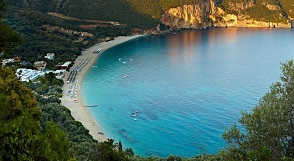 |
 |
 |
|
One of the highlights of Parga is also a walk along the river Acheron (in ancient times known as the river Styx), where nature is beautiful. You can also go canoeing or horse riding. The river flows into the sea at Ammoudia (south of Parga). On the banks of the river Acheron, where the river Acheron and the river Hades meet, near near the northwest shores of Lake Acherousian, lies the ancient site Nekromanteion of Ephyra, a sanctuary with underground tunnels in the shape of a labyrinth, that dates from the 6th century BC. It it believed to have been a temple / oracle where the faithful came here to talk with their dead ancestors and ask for advice. Others say it was "just" a fortified farmhouse, where also weapons and agricultural tools were made, but Homer already referred to the Nekromanteion in his Odyssey and describes how Odysseus descended to the underworld of Hades here. Another interesting sight is the capital of Epirus, which is called Ioannina. It has over a 100.000 inhabitants. Ioannina is situated northeast of Parga and it is set on a lake. In the lake lies and island with important monasteries on it and there is a Turkish citadel from the 17th century in the town. Very impressive is also the Vikos Gorge, which is the world's second deepest ravine after the Grand Canyon. It is around 20 kilometers long and the hight of its walls vary from 450 to 1600 meters. On some places it is 400 meter wide, on other places just a few meters. North of Parga at 3 kilometer distance, in the village of Anthousa, you can take a look at well preserved castle of Ali Pasha. The castle has very thick walls and there are some remaining canons that are pointing towards Parga. Ali Pasha was the Turkish governor of Ioannina, who had the castle built in order to overlook the region. He is buried on the site. There are wonderful views to Paxos and Antipaxos and on clear days also over the island of Corfu. |
© Hans Huisman, https://www.angelfire.com/super2/greece/ 2013

 If you want to visit Parga you have to fly to the town of Preveza, which lies south of Parga.
You could also take a flight to Athens and then take a domestic flight to Preveza. The flight from Athens to Preveza takes about 45 minutes. The distance from the airport of Preveza to Parga is just over 60 kilometers.
If you want to visit Parga you have to fly to the town of Preveza, which lies south of Parga.
You could also take a flight to Athens and then take a domestic flight to Preveza. The flight from Athens to Preveza takes about 45 minutes. The distance from the airport of Preveza to Parga is just over 60 kilometers.